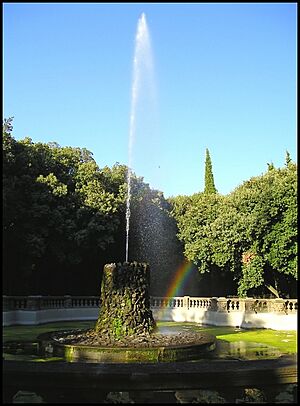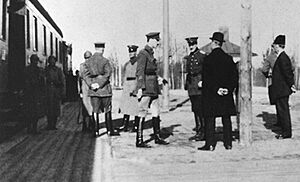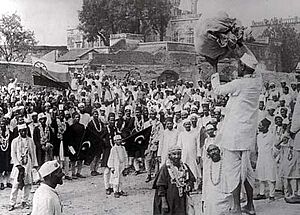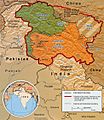Conrad O'Brien-ffrench facts for kids
Quick facts for kids
Conrad O'Brien-ffrench, 2nd Marquis de Castelthomond
|
|
|---|---|
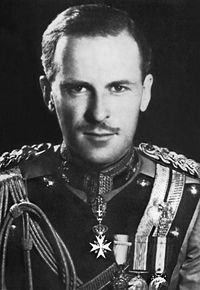
Conrad O'Brien-ffrench c. 1919
|
|
| Nickname(s) | Eagle (Regimental nickname 1921) |
| Born | 19 November 1893 London, England |
| Died | 23 October 1986 (aged 92) Loveland, Colorado, United States |
| Allegiance | |
| Years of service | 1912, 3rd batt. Royal Irish Regiment; 1914–1919, served in World War I; 1922, captain 16th The Queen's Lancers; 1919–1920, assistant military attache at Stockholm; 1920–1921, at Helsingfors; 1922, A.D.C. to Gov. of United Provinces, India |
| Rank | Captain, 16/5 Lancers |
| Unit | Royal Irish Regiment (Disbanded 1922. Not the current Regiment created 1992); 16th The Queen's Lancers |
| Battles/wars | Mons, World War I |
| Awards | The 1914 Star, Clasp & Emb., 13 August 1914 (Mons Star); The 1914 British War Medal (Squeak), 1914–1918; The Allied Victory Medal (Wilfred); Knight of Honour and Devotion of the Order of St. John of Jerusalem |
| Other work | SIS/MI6 Agent ST36 1919–1922. He rejoined in 1930 and became an operative (Agent Z3) for Claude Dansey's Z Organization until 1938. |
Conrad Fulke Thomond O'Brien-ffrench, 2nd Marquis de Castelthomond (born November 19, 1893 – died October 23, 1986) was a brave British Secret Intelligence officer. He was a captain in the Royal Irish Regiment and 16th The Queen's Lancers during World War I. He also served as a Mountie for the Royal North-West Mounted Police in Canada. Conrad was a talented artist, spoke many languages, loved climbing mountains, skiing, and wrote books.
Contents
- Conrad O'Brien-ffrench's Early Life and Education
- Joining the Royal North-West Mounted Police
- Conrad's Military Service in World War I
- Conrad's Love for Mountaineering
- Conrad's Art Career
- Conrad's Marriages and Family Life
- Return to Secret Service Work
- Life at Fairholme Ranch
- Later Years and Legacy
- Biography
- See also
- Images for kids
Conrad O'Brien-ffrench's Early Life and Education
Conrad O'Brien-ffrench was born in London, England. He was the second son of Henry Albert De Vreque O'Brien-ffrench. His mother was Winifred Thursby.
Conrad and his older brother, Rollo, spent their early years in Italy. They lived at Villa Torlonia (Frascati) near Rome and later in Florence. Private tutors taught them English, French, and Italian. When they returned to England, Conrad attended the Wick preparatory school. He later went to Bradley Court Agricultural College. There, he learned about horses and country activities.
Joining the Royal North-West Mounted Police
When Conrad was 16, his life changed suddenly. His brother Rollo died in a football accident. Conrad left school to study farming. He met a judge from Canada who told him about the Royal North-West Mounted Police.
In April 1910, at age 17, Conrad sailed to Quebec on the Empress of Britain. He then traveled west to join the Mounted Police in Saskatchewan. After training, he worked in remote areas like Cypress Hills. In 1912, he learned his mother was very ill. He bought his release from the police and returned to England to be with her. She passed away the next summer.
Conrad's Military Service in World War I
After his mother's death, Conrad joined The Tipperary Militia in Ireland. This was a special unit of the Royal Irish Regiment. In August 1914, he became a captain. He fought in the Battle of Mons as part of the British forces.
Captured During the Battle of Mons
On the first day of the battle, Conrad was badly hurt. He was captured and became a prisoner of war (POW). He was held in German POW camps. He tried to escape many times, but he was always caught.
He was then moved to a camp called Augustabad. It was thought to be escape-proof. Here, he exchanged letters with his friend Cathleen Mann. He used invisible ink to send secret information. This included details about German troop movements. He even sent information about a new German bomber. Cathleen Mann worked for British intelligence. She quickly sent Conrad's information to important British leaders.
Working for MI6, British Secret Service
After World War I, Conrad was asked to join MI6, the British Secret Service. This happened in December 1918. He was sent to Stockholm, Sweden, as an assistant military attaché. Conrad had learned to speak Russian fluently while a POW. His job was to gather information from Russian refugees. These refugees were fleeing the Russian Revolution of 1917.
In 1920, Conrad helped a Russian diplomat, Leonid Krasin, travel to London. They had to pass through countries that were against the new Communist government. Krasin was going to meet with British Prime Minister Lloyd George. They discussed bringing back trade with Russia. This meeting was the first time Russian Communist leaders met with the outside world. It led to an important trade agreement in 1921.
After this, the Secret Service faced budget cuts. Conrad left the service and went back to England.
Serving in India
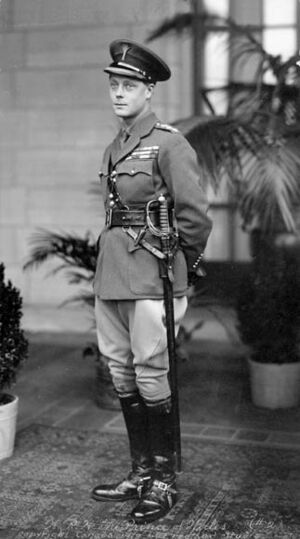
When Conrad returned, he became an aide-de-camp for a British Governor in India. This was for a royal tour by Edward VIII, who was then the Prince of Wales. The tour lasted from December 1921 to April 1922.
During this time, the Indian National Congress led by Gandhi was very active. The royal tour was met with peaceful protests and some riots. The British response to these protests was harsh. This played a part in the end of British rule in India.
Conrad saw discussions about arresting Gandhi. Gandhi had called for peaceful disobedience. He asked people not to pay taxes unless the British stopped interfering with non-violent actions.
A violent event happened in Chauri Chaura. A mob attacked a police station, and 22 officers died. Gandhi did not support this violence. He stopped his non-cooperation movement. British officials then arrested Gandhi. Conrad saw how one man's peaceful actions could change things. British control in India eventually ended.
Conrad's Love for Mountaineering
In India, Conrad discovered his passion for mountaineering. He explored the Himalayas. One dangerous climb was in Kashmir. A sudden storm turned the mountain into an icy waterfall. Conrad led his team to safety and to the summit.
He also explored the Austrian Alps and other mountain ranges. He met famous climbers like Sir Edmund Hillary. Conrad became a lifelong member of the Alpine Club in 1933. He loved skiing and rock-climbing in the mountains.
Conrad's Art Career
After returning to England, Conrad explored a career in art. He had painted hunting scenes that were published in a book. This encouraged him to study art. He attended the Slade School of Fine Art and the Byam Shaw School of Art in London. He also studied in Paris at Andre Lhote's Academy.
Conrad became known for his portraits. He traveled to Jamaica with his father to paint. He had exhibitions of his paintings in London, Paris, Jamaica, Canada, and the United States.
Teaching Art
Conrad also taught art. From 1948, he taught at the Banff School of Fine Arts in Canada. He later became president of the Rim Rock School of Fine Art in Colorado. He also served as vice president of the Water Wheel Gallery.
Conrad's Marriages and Family Life
On June 16, 1931, Conrad married Maud Astrid in Paris. She was the daughter of Colonel Bo Tarras-Wahlberg from Sweden. They had a daughter named Christina Laetitia. Their marriage ended in 1934.
Conrad remarried on May 1, 1945, in London. His second wife was Rosalie Isabelle Baker. They moved to Canada and had two sons, Rollo and John.
Return to Secret Service Work
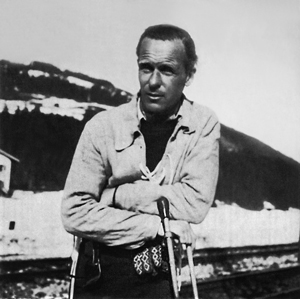
Conrad became friends with Stewart Menzies, who later led the British Secret Service. Menzies convinced Conrad to rejoin the Secret Service as Agent Z3. Conrad pretended to be a businessman. He started a travel company called Tyrolese Tours. This allowed him to create a spy network in Austria and Southern Germany.
While in Austria, Conrad met Ian Fleming, the author of the James Bond books. They often met on ski slopes or at friends' homes. Some believe Conrad's adventures and spy experiences inspired Ian Fleming's character, James Bond.
Reporting on Nazi Activities
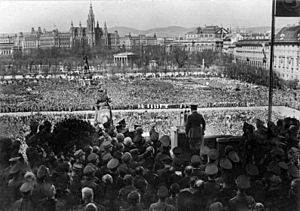
Conrad gathered important information about Nazi activities. He reported on the build-up of German forces before World War II. On March 11, 1938, he learned that German troops were moving towards the Austrian border. This information was very important.
Conrad immediately called London to report it. He was told this was the first news the Allies received. He continued to get updates. He warned local residents, helping many people escape to safety. The next morning, German troops entered Kitzbühel.
The Gestapo, the Nazi secret police, later created a list of wanted Britons. This was called "The Black Book." Conrad's name was on this list. It said he was a "British Agent, Captain." This showed that his cover as a spy was known. After Austria was taken over by Germany in 1938, Conrad left the intelligence services. During the war, he also worked as a censor in Trinidad.
Life at Fairholme Ranch
After World War II, Conrad and his wife Rosalie moved to British Columbia, Canada. They later bought "Fairholme Ranch" near Banff, Alberta. Conrad designed and helped build a large lodge and a cottage there. They raised their sons, Rollo and John, at the ranch. Conrad also raised horses and taught visual arts at The Banff School of Fine Arts.
In 1958, Princess Margaret, Countess of Snowdon stayed at Fairholme Ranch during her visit to Canada. The ranch offered beautiful views of Princess Margaret Mountain, named in her honor.
Later Years and Legacy
Conrad later lived in West Vancouver and then retired to Colorado. He continued to teach and exhibit his art. He spent his final years painting and giving talks on art, philosophy, and religion.
Biography
Conrad O'Brien-ffrench's autobiography, Delicate Mission, Autobiography of a Secret Agent, is found in many collections, including:
- The Imperial War Museum
- The British Library
- Library and Archives of Canada
- White Museum of the Canadian Rockies
- The Alpine Club Library
See also
- Ian Fleming
- Inspirations for James Bond
Images for kids
-
Arthur Seyss-Inquart and Hitler in Vienna, March 1938.


